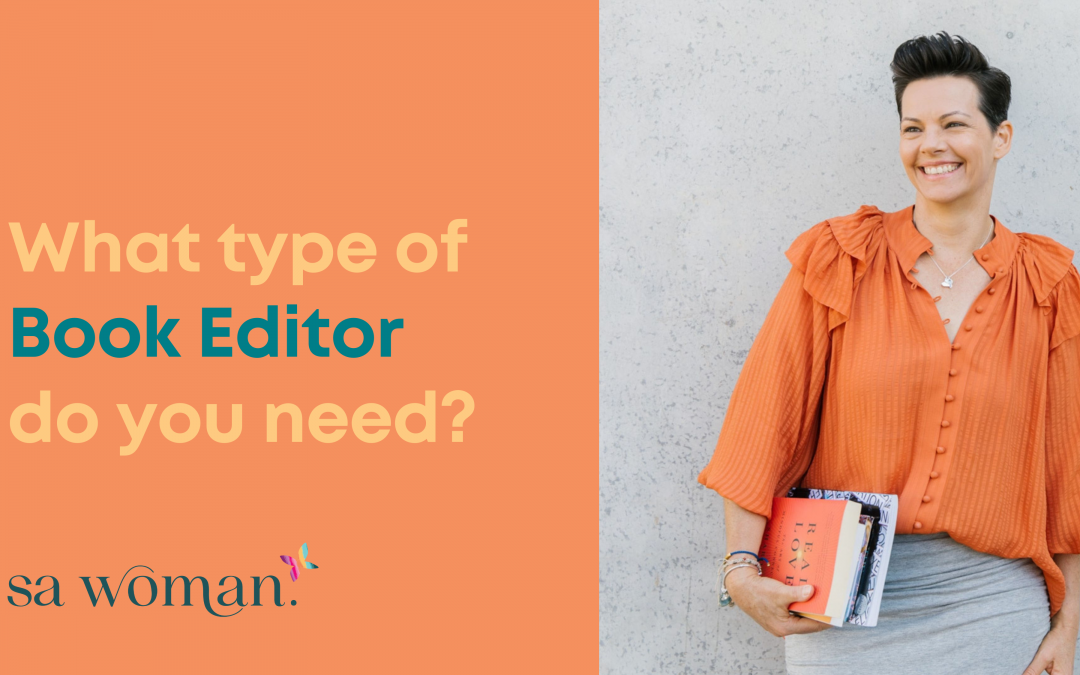Congratulations! You’ve just typed ‘The End’ on your manuscript for the umpteenth time, and you’ve lost count of what number draft you’re up to.
What now?
Now the fun begins … or it would if it weren’t for the fact that many first-time authors find hiring a professional editor a daunting task.
Why? Book editing comes in different forms, at different stages of the process, and is called different things by different people.
That’s a lot of differences!
I know when I started writing several years ago, confusion around all things editing – the what, how, who, when – seemed all too hard. This, on top of feeling uncertain about my story and writing ability, almost made me file my manuscript away in the bottom drawer, never to see the light of day again.
But, with a little time, reading and research, it didn’t take long to understand the major editing steps better.
You can undertake these steps independently, work with a professional editor, or have both, depending on where you are in your writing journey, your budget, and what you feel is the best option to make your story publishable.
The important thing to remember is to hire the editors in the correct order; otherwise, someone else’s work (and your money) will be for nothing. It’s also important to note that you may not want or need all types of editors, but you should at least consider them all.
Below are the various editors and their purpose. Individual editors have their own set of checklists of what they do and don’t do, so confirm what aspects you’d like covered before working with them.
Developmental Editing | Structural Editing | Substantive Editing
Have you ever been asked, ‘Is your manuscript structurally sound?’ and wondered what that means?
This first level of editing is the heavy lifting stage. It’s complex and looks at the ‘big picture’. It’s when the editor dives deep into your manuscript and looks at:
- The overall plot: Does it make sense? Are there plot holes or inconsistencies? Do you have subplots that reinforce the story and theme and add to the climax?
- Characterisation and character arcs: Do they progress and change/develop throughout the story? Are they consistent? Are their motivations clear and actions believable? Are the sub-characters adding to the story?
- Theme: Is/are the themes consistent?
- Organisation: Is the story organised in a way that makes it easy to read? Is the timeline appropriate and engaging for the reader? Does the pace meet the expectations of the genre/reader?
The editor will give specific feedback on improving the overall story and offer suggestions to get the reader to connect with the characters and story.
This type of editing can be a slog, and it may seem like a never-ending rewriting of pages and reimagining and developing of characters, plot and story world.
Manuscript Assessment
If you’re looking for an alternative to a complete structural edit, an option is to get a manuscript assessment.
Here, the editor will read your manuscript and provide an objective written evaluation addressing the above points. It’s not as in-depth as a structural edit, and the details aren’t referring to specific paragraphs or pages. The assessment provides strengths, weaknesses and recommendations to help the manuscript find its full potential.
A manuscript assessment is recommended before the structural editing stage and when the manuscript has been through several drafts.
Line Editing | Copyediting | Stylistic Editing
Now, different editors use slightly different definitions for editing types – so this is my take on how I edit both fiction and nonfiction manuscripts.
This edit takes place when the narrative is solid and structurally sound. If needed, I’ll edit from a scene level, then look at paragraphs and sentences – a line-by-line and word-by-word edit from start to finish and everything in-between.
Some suggest that line and copyediting are two separate stages, but I like to bundle them together because they are similar, which is my core service.
This is what I focus on when line/copyediting a manuscript, and again, check with your editor to ensure they cover what you’re looking for.
- scene pace and flow, paying particular attention to repetition and overwriting
- authenticity of your voice
- spelling, grammar, punctuation, hyphenation and capitalisation
- clichés, similes and metaphors and the use of tenses and POV
- layout, spacing, formatting, chapter sequencing and reference checking
- dialogue style and punctuation
- use of ‘show’ and ‘tell’ techniques
- ensuring every word serves a purpose
Proofreading
The final stage of the editing process – the quality control, is about finding all those pesky little mistakes that have been missed through the other stages.
Do not skip this step!
Small (or large) typos, spacing errors during formatting and missing punctuation can distract your readers. You’d be surprised at how many one-star reviews are received because of these errors.
I suggest using fresh eyes – another person or a professional proofreader (like me!) – to undertake this stage.
Why?
Usually, you’ve read and reread your manuscript 10, 20, or 30 times by now, which means you know the story inside and out, and your eyes will probably gloss over the words and miss the errors.
Having a fresh set of eyes read your words after the final round of edits and formatting is ideal. It will leave you feeling confident your precious words are ready for the world to read. You don’t want to spend all your time and money publishing a book with correctable errors.
Book Coach | Writing Coach
No matter what stage of the writing process you’re at, a book coach can be a valuable investment. They become your editor, teacher, writing expert and cheerleader.
Coaches can help if you are:
- a first-time writer who’s never written before
- a writer who wants to start a new book with an expert on hand to help with story development
- a writer who has some experience and wants to expand their writing craft, or have a manuscript reviewed.
Writing coaches can take you through everything from story fundamentals and outlines to one-on-one sessions and expert guidance to get your manuscript written, redrafted, complete, and ready for submission or publication.
Working with a book coach means you don’t have to go it alone.
Connect with Jo:
Facebook: Nurturing Words – Book editing + proofreading by Jo Speirs
Instagram: @nurturing.words_editor
LinkedIn: Jo Speirs
Website: www.nurturingwords.com.au

ARTICLE BY
Jo Speirs from Nurturing Words
Jo Speirs grew up on a farm in a small rural community on the Eyre Peninsula of South Australia, where she wrangled sheep with her dad, baked, sewed, and crafted with her mum and was a keen netballer. Scouring the school library shelves for Sweet Valley High romance novels became a favourite pastime in her teens and fuelled her passion for reading and writing. Nowadays, she lives in Adelaide with a stinky teenage son and messy twenty-year-old son, husband, and a border collie named Zeb.
When she’s not using her life experiences as inspiration for her contemporary rural romance stories, you’ll find her using her best skills as an experienced line and copyeditor + proofreader, helping self-publishing authors reach their writing (and book sales) goals. She provides gentle, constructive and insightful feedback and edits … and many suggestions to improve, not change the author’s story or voice.

